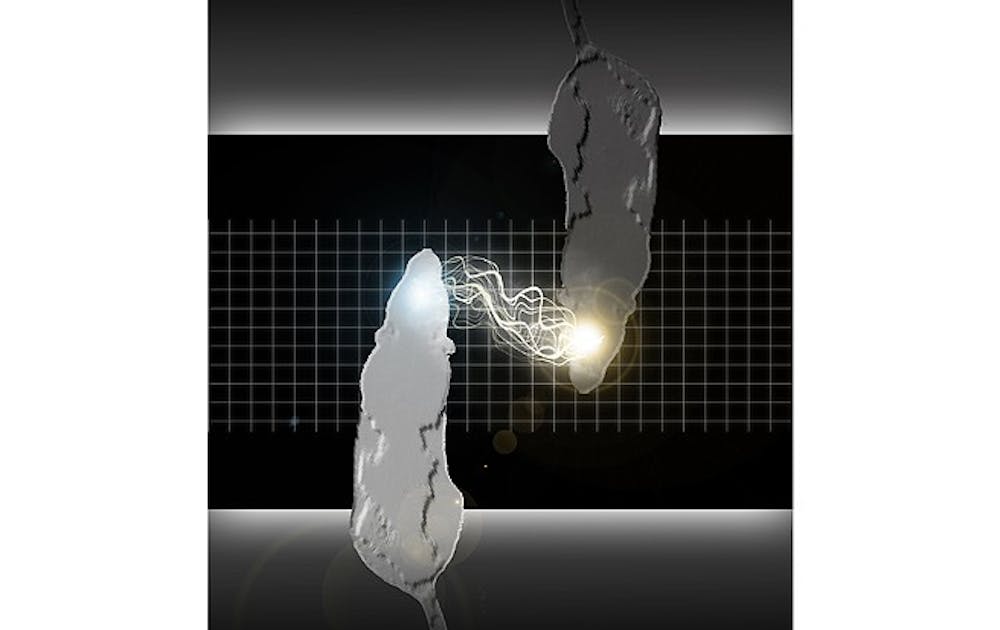The brains of two rats have been connected over a long distance, creating an artificial communication channel between the two animals.
Scientists studying brain-machine interfaces at the Nicolelis Lab have demonstrated that the real-time transfer of sensory-motor brain signals from a rat in Natal, Brazil to another in Durham, N.C. leads both rats to make similar behavioral selections. The researchers used a brain-to-brain interface, allowing the visual and motor signals of one brain to be transmitted directly to the other. These results give further support to the notion that the brain is capable of processing additional signals from unconventional sources.
“The study underscores the brain’s ability to find and exploit regularities between neural patterns of activity, and to use them to increase the rate of reward—even if the thing that’s doing the transduction... is derived from the activity of another animal,” said Marshall Shuler, assistant professor of neuroscience at Johns Hopkins University.
The first rat, the encoder, was placed in an environment where it was presented with a task to move toward a stimulus to receive a reward. As the encoder rat performed the task, samples of its brain activity were sent to matching cortical regions of the decoder rat, which received the microstimulation to perform the same task.
Prior to connecting the brain-to-brain interfaces, both encoder and decoder rats were conditioned to move in accordance to a particular stimulus in order to collect a reward. For the encoders, the stimulus was either a visual or tactile cue, and for decoders, the training stimulus was an artificial electrical impulse delivered directly to the brain.
Once both groups became proficient at the task, the two were connected to form a “dyad system” in which sensory-motor activity from the encoder group was fed to the brain of the decoder as stimuli in real time. The task was re-administered to the encoder group and the results showed that the decoders were able to perform similarly with approximately 70 percent accuracy, even when the two groups were separated by extremely long distances.
The successful performance of the decoder group is largely dependent on the quality of information extracted from the encoder, according to the study. The artificial stimulus given to the decoder group during training was a lot “cleaner” compared to the direct feed from another brain, which results in slightly lower accuracy in the experimental group, said Miguel Nicolelis, co-author of the study and professor of neurobiology, biomedical engineering and psychology and neuroscience.
“It depends on the attention of the encoder,” he said. “If the task is done smoothly and the signals in the brain are not too noisy, then the [activity] we record will be cleaner.”
The study also revealed an unexpected emergent behavior. In addition to the reward from the first task, the encoder rat was given a second reward if its partner performed the task successfully. Evidence of a feedback mechanism emerged, in which the encoder rat modified its action based on the performance of the decoder to receive a second reward.
“If the decoder did not make the right selection, then in the next trial, the encoder makes its movement smoother and more accurate, and it cleans up its brain pattern,” Nicolelis said. “Almost like it’s paying more attention to the task to get the second reward.”
Furthermore, upon examination of the decoder’s brain, the researchers found that it was still capable of processing sensory-motor information from its own body, suggesting that the brain was simultaneously representing its own body as well as the body of the encoder rat. Although this proves the brain’s ability to process alternative stimuli, it does beg the question of whether the encoder loses its sense of self, Nicolelis noted. This a question he hopes to answer through a future study with monkeys.
The successful linking of two brains to complete the same task holds many implications for future biological computing devices. For Nicolelis and his colleagues, the study begins to test what networks of connected brains can do together. Additionally, the affirmation of the brain’s capabilities opens the door for more feedback-intensive neuroprosthetics.
“Overall this work advances [the lab’s] goal to devise more intelligent brain machine interfaces by closing the control loop,” Shuler said. “[These] not only takes neural activity patterns from the brain to control devices, but then uses sensors on those devices to directly stimulate the brain, because the brain can use that stimulation to learn.”
Get The Chronicle straight to your inbox
Signup for our weekly newsletter. Cancel at any time.

